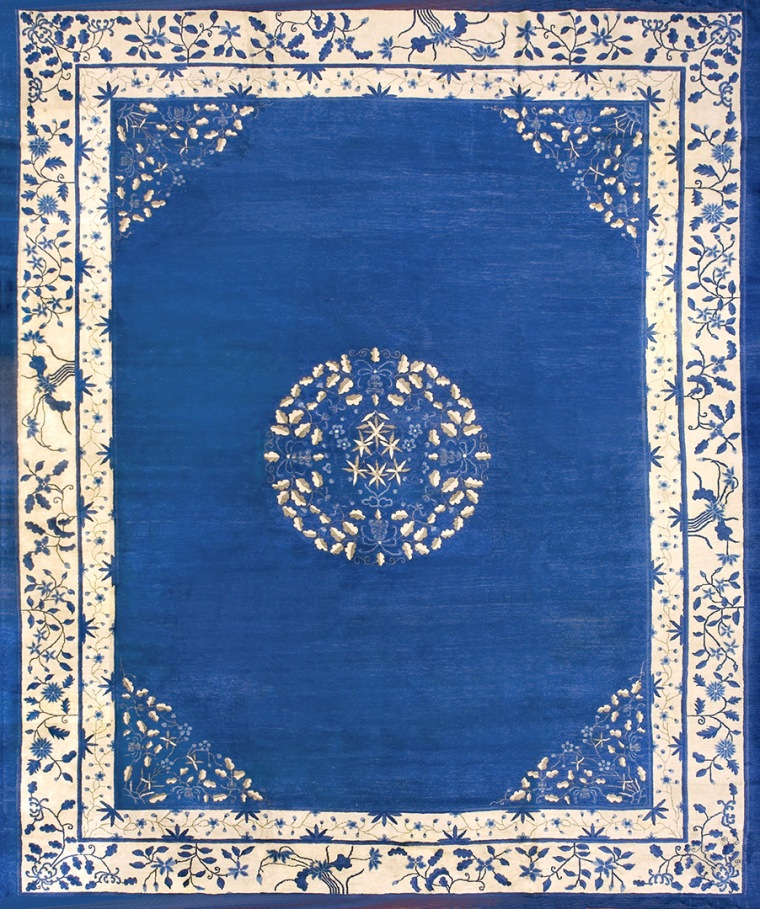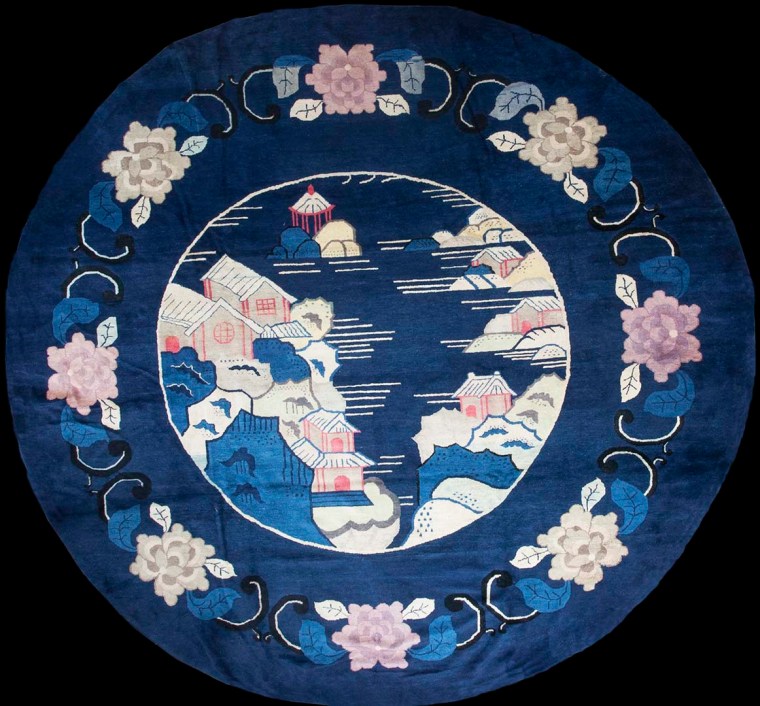The Antique Peking Chinese Rug
Carpets have been woven in Peking (Beijing) since the sixteenth century, but the best and most relevant era of antique Peking Chinese rugs classic is the 1880-1930 period. The range of formats, sizes, designs and colors is exceptionally broad. Oval and round rugs, small scatters through room size to mansion dimensions, traditional through Art Deco, blue and white and polychrome. This blog is only a brief overview of a few salient types and styles, and to go deeper would take a full book.
The Chinese invented, first in porcelains and then in other art forms, the blue and white color scheme. Nothing is more classic and says “Chinese” better than an ivory field with a royal blue border or vice versa. Add some paeonies, cloud scroll arabesques, swastika fret allover pattern, exotic Chinese objects, seasonal flowers, birds and butterflies and bats, and the result is always in the best of taste. The Chinese artistic vocabulary is virtually limitless and antique Chinese Peking carpets draw on all of it. Blue and white may be rendered in a classic 18th century Ningxia style, in a rigourous two-tone Shou medallion carpet or in an oval layout in an antique Fette carpet with a cloud scroll field. Blue and white works well in a more Deco approach with a one corner deer and crane mini-landscape.

Antique Peking rugs can be totally pictorial in the manner of hanging scrolls employing symbolic animals such as cranes, seasonal trees like the pine or bamboo, and one cloud variant or another. Or they can display a ship (junk) before the wind, on a rose tone ocean. Scholar’s rocks, perforated and knobby, are a pictorial mainstay on antique classic Peking carpets. The horizontal handscroll format is perfect to illustrate Daoist immortals or other mythical persons. The smaller pictorial rugs make great wall hangings.

There are rare antique Peking rugs: the small round piece illustrated here with a charcoal open field and dragons with phoenixes seems to be unique. The cracked ice pattern, so frequent on porcelains, seems to be quite uncommon on traditional allover patterned antique Peking carpets.

Peking carpets never went as chic as Tientsin (Tianjian) Art Deco carpets with their bold moderne tonalities and wholly abstract pattern. The Fette-LI Company, established around 1923 by Helen Fette, specialized in a less hard edged style with motives adapted from textile and jades in traditional antique Chinese carpet colors, but in renditions tailored to American taste. Round and oval antique Chinese rugs were a Fette specialty. Fettes were the most popular of Peking Chinese carpets in the interwar period. In addition, there were numerous now anonymous Chinese firms producing attractive carpets for American importers.
